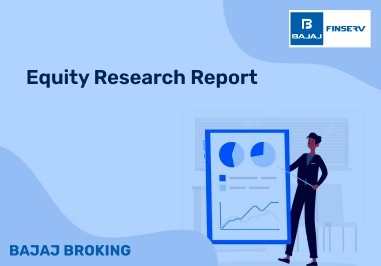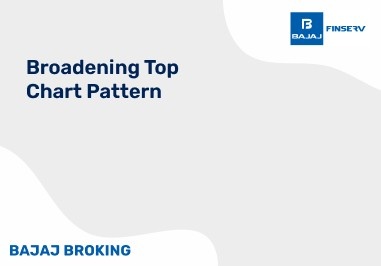Markets are inherently volatile. However, despite the ups and downs, the hits and the misses, the market has always been appealing. Something that attracts everyone, be it a full-time trader or a first-time investor, is an IPO. IPOs, Initial Public Offerings(IPO Full Form), are a time-tested way for a company to raise funds. For investors too, public offerings have triggered interest. The idea of making quick and high returns leaves many wishing to invest more in IPOs.
However, not all investors have the advantage of available funds. This is where IPO margin funding comes into the picture. Read on as we discuss a little more in detail about:
- What is Margin Funding in IPOs?
- What are the Advantages of IPO margin funding?
- The Risks and Challenges of Investing in an IPO through Margin Funding
- How to Make the Most of Margin Funding?
What is Margin Funding in IPOs?
If you have been holding yourself back from this much sought-after investment opportunity, maybe it is time you explore more about the financing options in IPOs. Also called IPO financing, IPO margin funding, is a financial service offered by banks and NBFCs. Simply put, it is like a loan that you can take to buy shares of an IPO. This borrowed amount can be very helpful in covering the margin between the subscription and your contribution.
For example, you wish to invest in a recently declared IPO where the subscription cost is ₹100. However, in your trading account, you only have ₹40. You can opt for IPO margin funding of ₹60 to cover the difference between what you have and what you need.
Just like a regular loan, when you apply for IPO financing, the lender will evaluate your creditworthiness. Your financial standing and history, your current income, and your liabilities will be assessed and if and when the lender is willing, the funds will be disbursed.
Additional Read: IPO Allotment Status
Eligibility for margin trading
To be eligible for margin trading, you need to have a Margin Trading Facility (MTF) account with a broker. The margin amount required varies depending on the broker and you must deposit a minimum amount when opening the account. Additionally, you must maintain a minimum maintenance balance in your account consistently. This ensures that you can cover potential losses and adhere to the broker’s requirements for margin trading fund.
If you're interested in IPO funding, it is also essential to understand that IPO financing by banks or brokers might involve different terms, such as those seen in Bajaj IPO financing or Bajaj IPO funding.
What are the Advantages of IPO Margin Funding?
Let us take a look at what makes margin funding so appealing.
- The interest rates are affordable
The easy availability of credit that too at a low rate of interest can make margin funding quite lucrative. As most loans are collateral-backed, they are lower than personal loans, credit card loans etc. - Allows you to leverage your assets
Missing an investment opportunity like an IPO, because of lack of funds, can often be unsettling. Margin funding allows leveraging of your existing securities and increases your investment portfolio. - Makes investing easy
The process of IPO margin funding is easy and convenient. It does not involve hefty paperwork and there are no complicated procedures to follow. All you need is a margin-enabled account, you can then be eligible for the financing whenever you need.
Additional Read: What is SME IPO?
Risks of Investing in an IPO through Margin Funding
Investors are always on the lookout for opportunities to make money. And while you may have heard stories of people earning returns through IPOs (Initial Public Offering), keep in mind that just like all other investments, IPOs also carry risks. Often more so than investing in established public companies.
The primary reason for this increased risk is the lack of available data on private companies, leading to more uncertainties and unknown factors in the decision-making process. Keep in mind that only because a company is going public, does not reflect it as a ‘good’ long-term investment.
How to Make the Most of Margin Funding?
Additional Read: Upcoming IPO
A little caution on your behalf can be very helpful in margin trading. Here are some easy tips that can help you make the most of your margin funds:
- Analyse your decisions
IPOs indeed look promising, however, you need to exercise caution. Understand the risks and take a look only if you are confident of its potential growth.
- Set aside for a rainy day
The only thing predictable in the market is its unpredictability. Keep some of your loan funds to be used in case you are unable to maintain a margin call.
- Pay all your dues on time
Make sure you clear all your obligations on time. Regular delays can blow up your dues and can soon make them difficult to manage.
Working of IPO margin funding
IPO margin funding allows investors to leverage their investment in initial public offerings (IPOs) by obtaining a loan from banks or financial institutions. The process begins with the investor approaching a lender and applying for IPO margin funding. The lender assesses the investor's creditworthiness, reviewing their financial history, income, assets and liabilities to determine the loan amount.
Once the margin funding is approved, the investor must contribute a percentage of the total subscription amount as their own margin money. This initial margin is a required down payment, while the lender provides the remaining funds as a loan. This IPO financing by banks is secured against the shares allocated to the investor during the IPO.
If the investor defaults on the loan, the lender has the right to sell the shares to recover the outstanding amount. This IPO funding process ensures that the investment is backed by the value of the shares, mitigating the risk for the lender. For those exploring options like Bajaj IPO financing or Bajaj IPO funding, similar principles apply.
What to look for before opting for IPO margin funding
Before opting for IPO margin funding, investors should consider several key factors. Evaluate your ability to repay the IPO margin funding loan, including interest charges. Understand that market volatility and unforeseen circumstances can affect the performance of IPO shares, potentially leading to losses. Conduct thorough research on the company's financials and overall stability. Assess the risks associated with the IPO funding process and ensure you are comfortable with the terms. This due diligence is crucial, especially when using margin trading funds or Bajaj IPO financing.
Ways to manage Margin Trading Fund
Managing margin trading fund effectively
Effectively managing a margin trading fund is crucial for optimising returns and mitigating risks. Here are some key strategies:
Make informed decisions: Margin trading can be risky. Only utilise margin trading funds if you are confident in the stock's potential. Research thoroughly and avoid impulsive decisions, especially when considering options like Bajaj IPO financing or Bajaj IPO funding.
Keep a reserve of funds: Always keep some funds aside to handle margin calls or unexpected market changes. This is vital for staying afloat in volatile markets and managing the IPO funding process.
Pay interest on time: Track your interest obligations related to the margin trading fund closely. Ensure timely payments to avoid accumulating excessive interest, which is crucial for maintaining financial health and understanding what IPO financing by banks entails.
Borrow prudently: Exercise caution with borrowing. Only borrow amounts you can comfortably manage and ensure you fully understand what is IPO funding before committing.
By adhering to these practices, you can better manage your margin trading fund and reduce associated risks.
Additional Read: What is Mainboard IPO?
Conclusion
Thanks to IPO Margin Funding, investing in an IPO is easily possible. When you see the right opportunity in the market, even if you are low on funds, you can dive in and make the most of the situation, however, just like regular loans, IPO financing needs to be a careful decision. Do not be tempted to take one, only because it is available. IPOs can magnify your returns, but they can also do the same to your losses. Caution and expertise will help you make the right decisions.
Disclaimer: Investments in the securities market are subject to market risk, read all related documents carefully before investing.
This content is for educational purposes only. Securities quoted are exemplary and not recommendatory.
For All Disclaimers Click Here: https://bit.ly/3Tcsfuc













